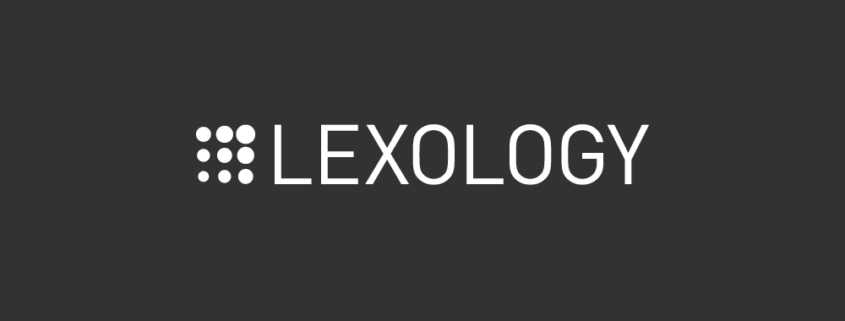A tough case dealing with some horrendous behavior and a pretty broad reading of Minnesota’s harassment/stalking laws has resulted in a sustained conviction on felony charges against a minor. The state appeals court summarizes the events in its decision [PDF]:
In March 2016, high school students, W.K., B.L., and appellant A.J.B., discussed that M.B., a fellow student who had been diagnosed with autism and ADHD, had recently posted some tweets discussing girls at school. B.L. and A.J.B. told W.K. that they wanted to post materials on M.B.’s Twitter page to elicit a “negative response.” A.J.B. created a Twitter account with no identifying information called “Jeb Bush’s Guac Bowl.” A.J.B. then began tweeting messages tagging M.B.’s account over two to three hours, with several referring to autism. One post contained a sign saying “Autistic Children Play Here” with a caption reading “Meanwhile at [M.B.]’s Daycare.” Another post contained a checkerboard of images with M.B.’s face and a caption reading “Click the Autistic Child.” Another post encouraged M.B. to “try a new cologne called ‘Anthrax.’” One post encouraged M.B. to “consider suicide,” while another contained an image stating “Consider the following” with a picture of a person holding a Clorox Bleach bottle. A.J.B. also posted an image of Pepe the Frog, “a known hate symbol,” hanging by the neck on a rope.
Another fine example of man’s inhumanity to man: high school edition. Trash rando A.J.B. ended up with two misdemeanor charges and one felony stalking charge — the latter predicated on the victim’s disabilities. There are a few concerns with the resulting ruling, not to mention the events leading up to the criminal charges.
To begin with, the victim was not even aware of the tweets until a school administrator brought them to his attention. The administrator had presumably been tipped off by other students. This led to the victim expressing suicidal thoughts and an extreme reluctance to return to school.
This dovetails into the court’s weird interpretation of Twitter mechanics. This confusion over how Twitter operates may have played a part in upholding the charges and finding A.J.B.’s speech unprotected by the Constitution. Eric Goldman points out this misapprehension allows the court to bypass the student’s free speech defenses, one of which compared tweeting unpleasant messages was no different than “posting flyers on walls.”
The court’s technological description of @tweeting is… garbled. It recounts evidence that “the act of tagging someone means that the messages are ‘on their wall. Anyone can see it but [the poster is] just making sure that the [tagged] person sees it.’” The reference to “their wall” in this passage is confusing. I cannot appear in someone else’s Twitter timeline unless they retweet me, whereas in Facebook and LinkedIn, my posts can show up on other people’s walls (at least in some cases) just by including their name in my post. Furthermore, AJB’s barrage of @tweets would NOT appear in AJB’s main newsfeed (as opposed to the “tweets and replies” option), and and would not seen by most readers, if the @ reference was the tweet’s first character; and none of MB’s followers would have seen AJB’s tweets unless they were also followers of AJB. Plus, MB would see the @tweets only if MB hadn’t blocked AJB and only if MB looks in the notifications area (which not everyone does). There’s a lot of technological complexity about how content appears on Twitter that the court glossed over.
As Goldman notes, blocking accounts is one remedy that doesn’t involve law enforcement. It’s of limited utility, considering new accounts can be created in a manner of minutes, but Twitter does give users some tools to deal with harassment and other unwanted interactions.
Second, this could have been handled by the school, rather than turning it into a criminal case. The school was the entity that brought the tweets to the attention of the student and a case could be made the harassment interfered with M.B.’s ability to continue attending school. While this education interference would have engaged school policies and discipline, this would not be without its own problems. Doing so would effectively punish someone for acts committed off-campus, which would raise its own Constitutional concerns.
The law itself is no help. It’s written broadly enough the court finds it easy to criminalize otherwise-protected speech.
Per this court’s interpretation, it’s criminal stalking in Minnesota to send two or more @tweets to a person knowing they would cause the person to “feel frightened, threatened, oppressed, persecuted, or intimidated.” The Minnesota criminal harassment statute is equally dubious, applying when a person sends two or more @tweets “with the intent to abuse, disturb, or cause distress.”
As Goldman notes, many of us are subjected to “criminal” behavior every day on the platform. Perhaps some of us even engage in it, as “causing distress” may mean little more than vehemently disagreeing with someone’s statements, views, political/religious preferences, etc.
There are a lot of free speech implications in play. The court threads the needle, but not in a helpful way. In order to find A.J.B.’s speech unprotected, it seizes on A.J.B.’s “targeting” of the autistic student by “tagging” him in the tweets.
The law is bad and the court is reading the law as the legislators wrote it. This could also be the way the legislators intended it to be read, rationalizing that no prosecutor would move forward with questionable charges predicated on a broadly-written law with an absurdly low bar for engagement (two tweets). Legislators either don’t know or don’t care that prosecutorial discretion means pursuing ridiculous prosecutions and overcharging defendants. It almost never means refusing to move forward with questionable cases. If the ruling is bad, it’s because the law invites bad rulings. The fact that the court doesn’t understand how Twitter works only makes it worse.
Permalink | Comments | Email This Story
Techdirt.
